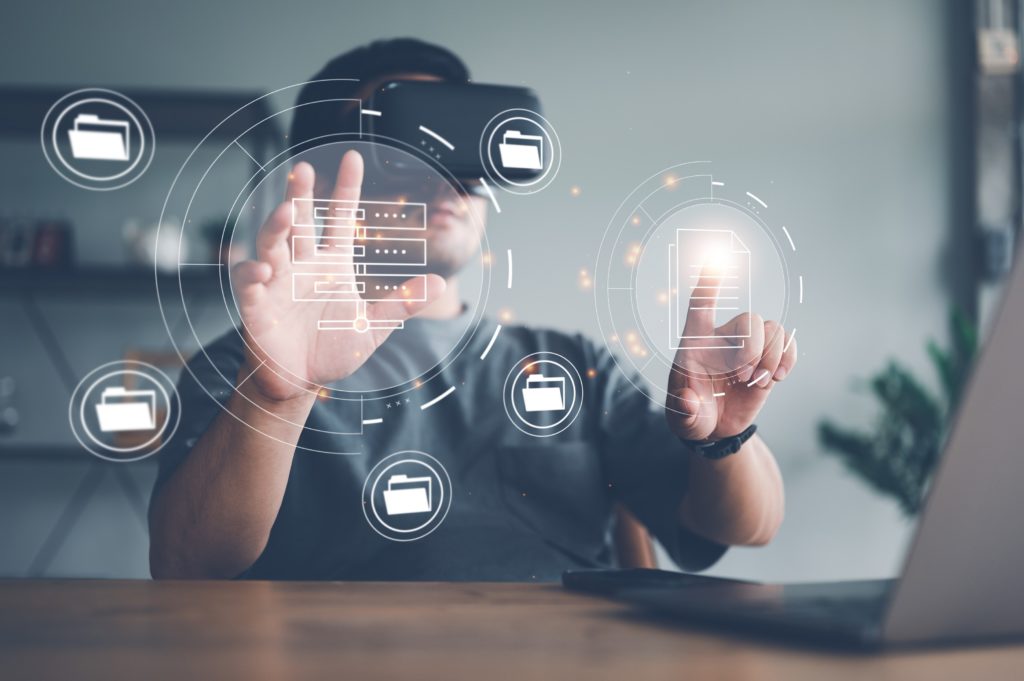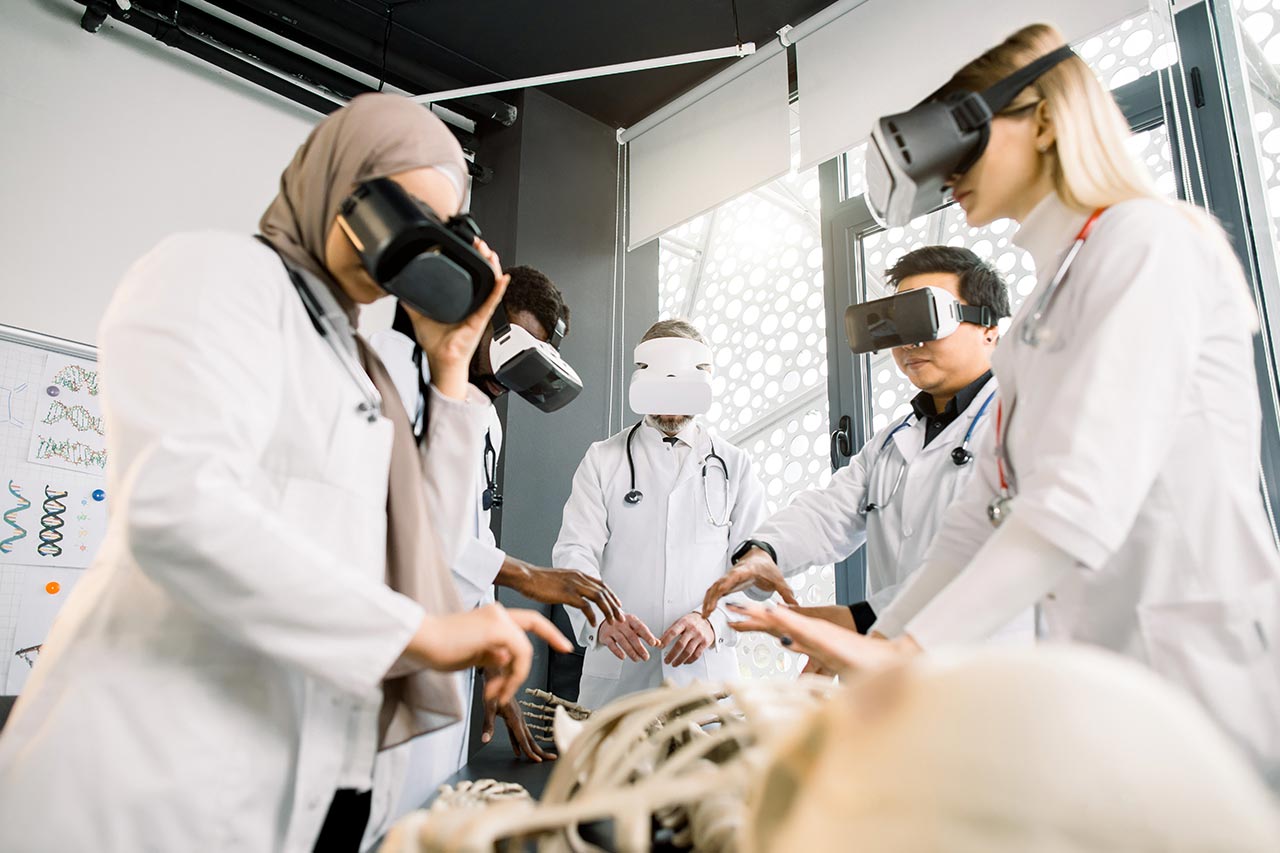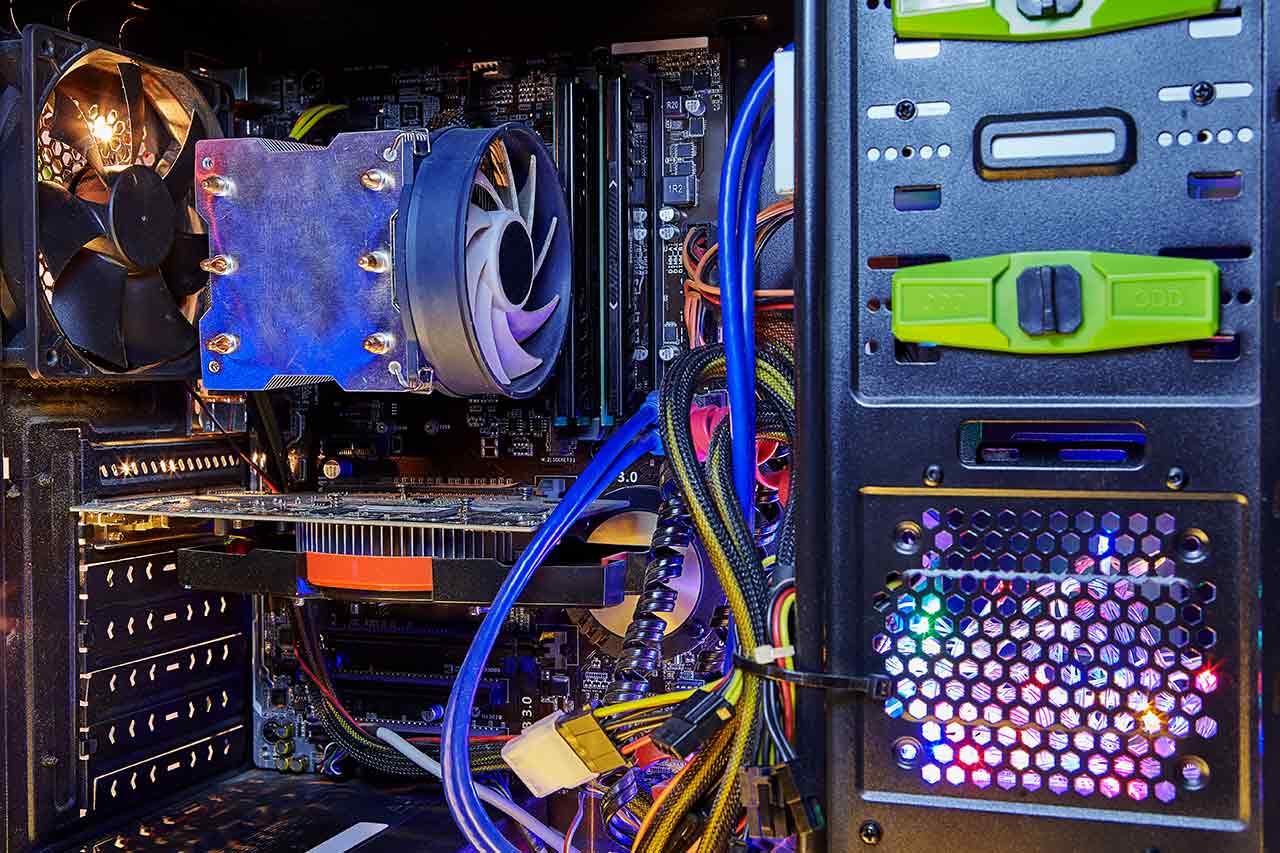The immersion into the metaverse is supposed to be intuitive and easy from anywhere
Eventually, connected glasses, worn on a daily basis, will certainly be used. To date, it is still virtual reality headsets or computer screens (for a softer immersion) that allow this immersion. Note that the concept of the metaverse differs from the concept of augmented reality, even if some people associate it with it. Augmented reality allows to superimpose virtually stored information onto the real world while the metaverse is a virtual world as such.
The metaverse contains projections or copies of the real world
For example, it is possible to have an exact reproduction of one’s house in the metaverse. In this sense the metaverse can also be associated with the concept of a “Digital Twin”, which is a digital copy that reproduces the exact functioning of the real alter-ego it represents. Today, digital twins are used to replicate complex machines, such as aircraft engines, for predictive maintenance, or to replicate systems, in order to optimize the operation of a factory.
Several people can enter the same metaverse space and interact virtually
The metaverse opens the door to a large number of applications. The most obvious ones are related to entertainment (e.g. playing a virtual game together with friends in a virtual copy of one of the participants’ house, while each participant is at home). There are also other potential applications that aim to facilitate the daily or professional life of their users.
For example, it is possible to imagine:
- That at the supermarket, if you can’t remember whether or not you need to buy a product (such as milk) you can use the metaverse. Thanks to connected glasses, you will be able to enter the virtual copy of your house, open your fridge and check that you don’t lack anything.
- That from your office or even from your home, you can move around your factory to check that there are no incidents. If there is a problem, you can work on the defective machine, and your actions will be reproduced in real time by a robot that will be in the factory.
In reality, imagining all the applications of the metaverse today would be like trying to imagining all the applications of the Internet in the 1970s!
The metaverse: Why now?
It has been possible to immerse into virtual worlds for several years now. So why is it that the metaverse is creating the buzz now? Mark Zuckerberg, by announcing the change of name of his company “Facebook” to “Meta”, has played an important role in the recent craze for this concept. However, other players, totally unrelated to this universe, have also invested in the metaverse. To name a few examples, there are players from the retail sector, such as Adidas or Hyundai, but also public institutions such as the city of Seoul, which will offer the city’s administrative services in their metaverse.
The first reason is without a doubt due to technological advances in the field (connected glasses, 5G, etc.) that have allowed companies to offer more mature products. Players on this market now feel confident enough to announce future market releases. The increase in maturity, reliability and power of these technologies means that today there is no longer any doubt about their potential, which encourages decision-makers to invest in this area.
The second reason is consumer acceptance of virtual interactions. The COVID health crisis has changed many habits in society, including the massive use of telecommuting and digital tools such as video conferencing, virtual collaborative workspaces… Consumer acceptance of the concept of a virtual world is now much better than before the COVID crisis.
The metaverse: three key challenges for its success
1. Ensure interoperability
One of the great advances of the metaverse will be to propose ONE virtual universe, in which we can join and do different activities together (play games, watch movies, work, etc.). Nevertheless, it is unlikely that there will be only one metaverse, because Mark Zuckerberg is far from being the only one to invest in this field!
So how will the different metaverses (Facebook, Microsoft, Apple, etc.) be managed in the future? Will we have to join several metaverse to be able to interact with our different groups of friends? Will it be necessary to have different equipment to immerse oneself in each metaverse? Or will it be possible to connect the different universes together and move from one to the other with ease? The question of interoperability between metaverses will be central.
What Meta probably envisions is to provide an “Umbrella Universe” upon which all other universes would interface. Thus, Meta’s metaverse would serve as a bridge between the other metaverses. This scenario hoped for by Meta is by no means certain.
This mode of operation appears to be the simplest for the user, but a key question arises: who will be responsible if Meta fails to establish itself as the leader? In other words, if there is an interoperability problem between metaverses, who will be responsible for restoring service? Meta or the other metaverses? Or will there be some kind of natural selection between metaverses? More than ever, GAFAMs (now “GAMAMs”!) will have to collaborate and coordinate to ensure success. This aspect of interoperability therefore raises the issue of standardization. This subject must be tackled today by the community of metaverse developers if they want to democratize their use.
2. Ensure Cybersecurity
The metaverse, as it is imagined today, requires the transfer of huge amounts of personal and/or critical data. Not to mention the possible sale of personal data by the metaverse operators, the danger of cyber attacks will be omnipresent (this danger increasing especially for professional applications). The more a company or society is dependent on these digital tools, the greater the risk of cyber attacks.
In other words, who will be the metaverse police? Who will be responsible for the cybersecurity of the interfaces of each metaverse, and who will make sure that there are no vulnerabilities? These questions must be resolved to create a sustainable metaverse that can be used in the long term. The blockchain could partly answer these cybersecurity needs by storing and transmitting information in a non-centralized and therefore less vulnerable way. Nevertheless, blockchain will not be able to replace all centralized servers overnight. The secure cloud (SecNumCloud in France) will therefore play a very important role in the development of a secure metaverse.
Discover our explorations in the field of Blockchain >
3. The need of resources to make this virtual world work
The metaverse, although it is a virtual world, is not infinite. It needs a lot of resources to function, which are real and limited: rare metals for electronic devices, energy sources for the functioning of data centers, etc. Today, Europe consumes 13,000 tons of rare metals per year. Japan consumes 32,000 tons. Even if the world’s reserves are significant, demand is constantly growing, particularly due to the development of other sectors such as electric cars. If we push digitalization further and further, and if the number of users continues to grow, we risk reaching the limit of these resources very quickly. It will therefore be necessary to think about a sustainable consumption cycle, with a reduced environmental impact.
Beyond these three challenges, it will be interesting to observe in the future how the meta-verse will modify the uses in the personal and professional spheres. How will the metaverse be used? Will it be used as a “tool for the real world” or as an “escape from the real world”? Probably a bit of both…
From a company’s point of view, it seems crucial to evaluate the opportunities provided by the metaverse to make it a real differentiator from its competitors. There are many issues to be addressed: what services should be offered as a priority in the metaverse? what are the corresponding commercial strategies? what are the barriers to be removed (technological, behavioral)? Alcimed will continue to evaluate opportunities linked to the metaverse, and the projects that are undertaken to address the key challenges for its success.
About the authors,
Steffen, Consultant and Alexandre, Director of the Alcimed’s Aeronautics-Space-Defence Business Unit in France



